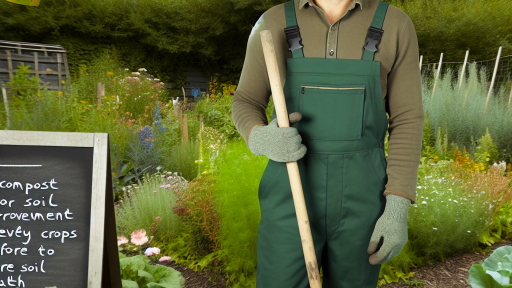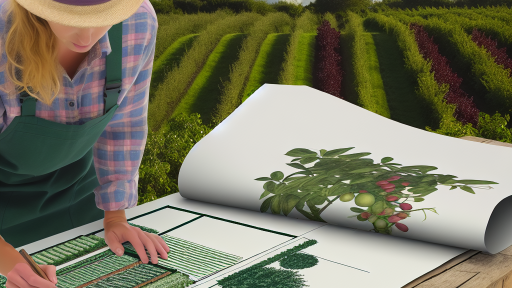Understanding the Basics of Hydroponic Lighting
The Importance of Light in Hydroponics
Light serves as the primary energy source for hydroponic plants.
Plants utilize light for photosynthesis, converting it into energy.
This process ensures healthy growth and development.
In fact, without sufficient light, plants may become weak and stunted.
Types of Lighting for Hydroponics
Different types of lighting offer unique benefits for hydroponic systems.
- Fluorescent lights are effective for vegetative growth.
- LED lights are energy-efficient and long-lasting.
- High-Pressure Sodium (HPS) lights produce a lot of heat.
Understanding Light Spectrum
The light spectrum consists of different colors and wavelengths.
Blue light promotes vegetative growth in plants.
Red light supports flowering and fruiting stages.
Using a full spectrum light can enhance overall plant health.
Light Duration Requirements
Plants require varying durations of light exposure.
Most plants thrive with 12 to 16 hours of light daily.
For optimal growth, consider using timers for consistency.
Positioning Lights for Maximum Effect
The distance between plants and lights affects their growth.
Position lights to ensure even distribution across crops.
Lowering lights increases intensity but risks burning plants.
Transform Your Agribusiness
Unlock your farm's potential with expert advice tailored to your needs. Get actionable steps that drive real results.
Get StartedAdjust the height of lights as plants grow taller.
Monitoring and Adjusting Light Conditions
Regularly monitor light levels to gauge plant health.
Adjust light intensity based on plant responses.
Use light meters to measure and maintain optimal conditions.
Types of Grow Lights
LED Grow Lights
LED grow lights are popular in hydroponics.
They offer energy efficiency and long lifespans.
Moreover, they produce less heat compared to other types.
This feature reduces the risk of burning plants.
LEDs come in various spectrums, aiding different plant stages.
Consequently, growers can customize light output easily.
Additionally, LEDs have lower operational costs over time.
HPS Grow Lights
High-Pressure Sodium (HPS) lights are well-known in horticulture.
They provide a high-intensity light that promotes flowering.
HPS lights emit a yellow-orange spectrum beneficial for plant growth.
However, they consume more electricity than LEDs.
These lights generate significant heat, requiring cooling solutions.
Growers should manage ventilation carefully to prevent overheating.
Fluorescent Grow Lights
Fluorescent grow lights are another viable option.
These lights are affordable and easy to set up.
They produce a cool light that works well for seedlings.
Fluorescent lights come in different types, including T5 and T8.
Both types are efficient for growing greens and herbs.
However, they lack intensity for fruiting and flowering plants.
Ultimately, proper placement enhances their effectiveness.
Showcase Your Farming Business
Publish your professional farming services profile on our blog for a one-time fee of $200 and reach a dedicated audience of farmers and agribusiness owners.
Publish Your ProfileDetermining Light Intensity Requirements for Different Plants
Understanding Light Requirements
Plants have varied light intensity needs based on their species.
Understanding these needs is essential for successful hydroponics.
Light intensity influences photosynthesis and growth rates.
Different plants require different levels of light throughout their growth stages.
Low-Light Plants
Some plants thrive in low-light conditions.
Examples include lettuce, spinach, and herbs.
These plants typically grow well under 200 µmol/m²/s of light intensity.
They are well-suited for indoor hydroponic systems.
Optimal Growth Conditions
For optimal growth, provide 12 to 16 hours of light daily.
Using LED lights can help achieve the desired intensity.
Regularly monitor plant health to adjust light exposure as needed.
Medium-Light Plants
Medium-light plants include tomatoes and peppers.
These plants generally require 200 to 400 µmol/m²/s of light.
Providing adequate light helps maximize yield and quality.
Light Duration Recommendations
These plants thrive with 12 to 14 hours of light each day.
Position lights to avoid overheating the plants.
Ensure timers are set for consistent light periods.
High-Light Plants
High-light plants, such as cucumbers and strawberries, demand significant light.
They usually require over 400 µmol/m²/s of light intensity.
Providing adequate light is crucial for their vigorous growth.
Ideal Light Management Strategies
These plants benefit from 14 to 18 hours of light daily.
Adjusting light intensity and duration can optimize growth.
Always observe plant development to fine-tune light conditions.
Seasonal Adjustments
Light intensity needs may vary with the seasons.
Monitor natural light changes to adjust artificial light accordingly.
Using light meters can help precisely measure intensity needed.
Utilizing Technology
Smart technology can automate light adjustments based on growth stages.
Apps and sensors provide real-time monitoring for optimal conditions.
Investing in this technology can enhance productivity.
Gain More Insights: Hydroponics vs. Traditional Farming Methods
The Importance of Light Spectrum in Plant Growth
Understanding Light Spectrum
Light spectrum refers to the range of wavelengths of light available to plants.
This spectrum significantly impacts photosynthesis and overall plant health.
Plants utilize different wavelengths for various processes.
For instance, blue light influences vegetative growth.
Conversely, red light promotes flowering and fruiting stages.
Effects of Different Light Wavelengths
Each wavelength serves a unique purpose in plant development.
Chlorophyll absorbs primarily blue and red light.
By focusing on these wavelengths, growers can optimize plant growth.
Ultraviolet light can enhance secondary metabolite production.
However, excessive UV exposure can harm plants.
Showcase Your Farming Business
Publish your professional farming services profile on our blog for a one-time fee of $200 and reach a dedicated audience of farmers and agribusiness owners.
Publish Your ProfileChoosing the Right Grow Lights
Selecting the right grow lights makes a substantial difference.
LED lights are popular due to their energy efficiency and spectrum versatility.
Additionally, full-spectrum lights imitate natural sunlight.
Fluorescent lights work well for seedlings and herbs.
Ultimately, the choice depends on specific plant needs and growth stages.
Measuring Light Intensity
Monitoring light intensity is crucial for optimal results.
Too little light hinders photosynthesis, while too much can cause stress.
Using a light meter helps in accurately measuring light levels.
Adjusting the distance of lights can help tailor intensity.
Furthermore, understanding each plant’s requirements ensures success.
Implementing Light Schedules
Light schedules play a vital role in plant development.
Most plants thrive under a cycle of light and darkness.
A typical schedule includes 16 hours of light and 8 hours of darkness.
Consistency in light schedules promotes stable growth patterns.
In contrast, irregular cycles may result in stress and poor yields.
Light Spectrum and Plant Health
Light spectrum directly affects plant growth and health.
Careful attention to light quality, intensity, and schedules enhances yields.
By optimizing light conditions, growers can achieve better crop production.
You Might Also Like: Best Soil Mixtures For Container Farming Success
Setting Up a Lighting Schedule
Understanding Light Duration
Light duration plays a critical role in plant growth.
Plants require light for photosynthesis.
Providing the right amount of light promotes healthy development.
Generally, most hydroponic plants thrive with 14 to 18 hours of light each day.
However, certain species may need more or less light.
Timing Your Light Exposure
Timing your light exposure affects plant behavior.
Plants can experience stress if light schedules are inconsistent.
Employ a consistent schedule to minimize stress.
Furthermore, utilize timers to automate light cycles.
Timers ensure plants receive light at the same times daily.
Adjusting Light Based on Growth Stages
Different growth stages require different lighting needs.
Seedlings benefit from longer light periods.
In contrast, flowering plants often need shorter durations.
Adapt your light schedule to match these growth stages.
Monitor plant responses and adjust as needed.
Balancing Natural and Artificial Light
Natural light can supplement artificial sources effectively.
Assess the growing area for existing light sources.
Utilize windows or skylights to enhance growth.
However, ensure that artificial lights compensate for any shortfall.
Blending both types of light can yield optimal results.
Learn More: Organic Practices For Urban Gardeners
Showcase Your Farming Business
Publish your professional farming services profile on our blog for a one-time fee of $200 and reach a dedicated audience of farmers and agribusiness owners.
Publish Your Profile
Adjusting Light Height for Optimal Plant Growth
Understanding Light Requirements
Plants have specific light needs based on their growth stages.
Seedlings require less intense light compared to mature plants.
Understanding these needs is crucial for successful hydroponic farming.
Determining the Right Height
The ideal height of your light source depends on the type of plants.
Generally, LED lights should be positioned between 12 to 24 inches above seedlings.
As plants grow, gradually raise the lights to maintain optimal conditions.
Signs of Light Stress
Monitor plants closely for signs of light stress.
Yellowing leaves may indicate too much light exposure.
Additionally, leggy plants often signal inadequate light levels.
Adjusting Light Intensity
Light intensity can affect plant growth significantly.
Use dimmers to adjust the light according to plant needs.
Ensure plants receive consistent light throughout the day for best results.
Using Technology for Precise Adjustments
Consider using automated systems for light height adjustment.
These tools can optimize conditions based on real-time data.
Automation simplifies the process, ensuring plants receive ideal light levels.
Uncover the Details: Pollinator-Friendly Edible Landscapes
Energy Efficiency Strategies for Hydroponic Lighting
Understanding Light Requirements
Plants in a hydroponic system need specific light wavelengths for optimal growth.
Understanding these requirements helps maximize photosynthesis.
Blue light promotes vegetative growth while red light encourages flowering.
Observing the light spectrum can enhance crop yield significantly.
Choosing Energy-Efficient Light Sources
LED lights stand out as the most energy-efficient option for hydroponics.
They consume less energy while producing the right spectrum of light.
Furthermore, LEDs have a longer lifespan compared to traditional lighting.
Consider compact fluorescent lights (CFLs) as another option.
Implementing Smart Lighting Solutions
Smart technology can optimize lighting schedules for better energy use.
Automated timers ensure plants receive the right amount of light daily.
Light sensors can adjust illumination based on environmental changes.
These measures can further reduce energy wastage significantly.
Maximizing Light Placement and Coverage
Proper light placement maximizes exposure for all plants.
Position lights closer to the plants to improve light intensity.
Using reflectors can enhance light distribution across the growing area.
Ensuring even light coverage can boost overall plant health and yield.
Scheduling Lights for Peak Efficiency
Adjusting lighting schedules can reduce energy consumption during off-peak hours.
Plants usually require longer light periods during their growth stages.
Consider utilizing shorter light cycles during less active periods.
This strategy contributes to overall energy savings without sacrificing growth.
Monitoring and Adjusting Lighting Systems
Regular monitoring helps identify opportunities for energy savings.
Using energy meters can track usage and efficiency over time.
Adjust lighting intensity based on plant growth stages for optimization.
This adaptability ensures plants receive exactly what they need.
Showcase Your Farming Business
Publish your professional farming services profile on our blog for a one-time fee of $200 and reach a dedicated audience of farmers and agribusiness owners.
Publish Your ProfileCommon Mistakes in Hydroponic Lighting and How to Avoid Them
Choosing the Wrong Light Spectrum
Many growers overlook the importance of light spectrum.
The spectrum affects plant growth and development significantly.
Plants require specific wavelengths for photosynthesis.
Ensure you use lights that emit the right spectrum.
LEDs offer customizable spectrum options for different plant stages.
Improper Light Duration
Another common mistake is incorrect light duration.
Plants require consistent light schedules to thrive.
Too much or too little light can hinder growth.
Monitor the specific needs of each plant species.
For instance, leafy greens often prefer 12-16 hours of light.
Ignoring Distance from Light Source
Distance between lights and plants is crucial for healthy growth.
Lights too close can cause leaf burn.
Conversely, lights placed too far can lead to stunted growth.
Adjust light height based on the type of light used.
Regularly check plant responses to adjust the distance properly.
Failing to Use Reflective Materials
Applying reflective materials can enhance light distribution.
Many ignore this easily overlooked aspect of hydroponics.
Using materials like Mylar or panda film can improve efficiency.
Reflective surfaces direct more light to your plants.
This simple adjustment can increase overall yields.
Not Monitoring Temperature and Humidity
Temperature and humidity play significant roles in plant health.
Lighting affects both these environmental factors.
Excessive heat from lights can raise room temperature.
Monitor conditions closely to prevent stress on your plants.
Employ fans or ventilation to regulate the environment efficiently.
Neglecting Plant Type-Specific Requirements
Each plant has unique lighting needs.
Neglecting these requirements can lead to poor results.
Research the specific light preferences of each crop.
For example, flowering plants may need different light schedules than others.
Use this knowledge to tailor your lighting setup accordingly.
Additional Resources
A Beginner’s Guide To Hydroponics | by Rachel Lee | Medium
Urban small-scale hydroponics: A compact, smart home-based …




